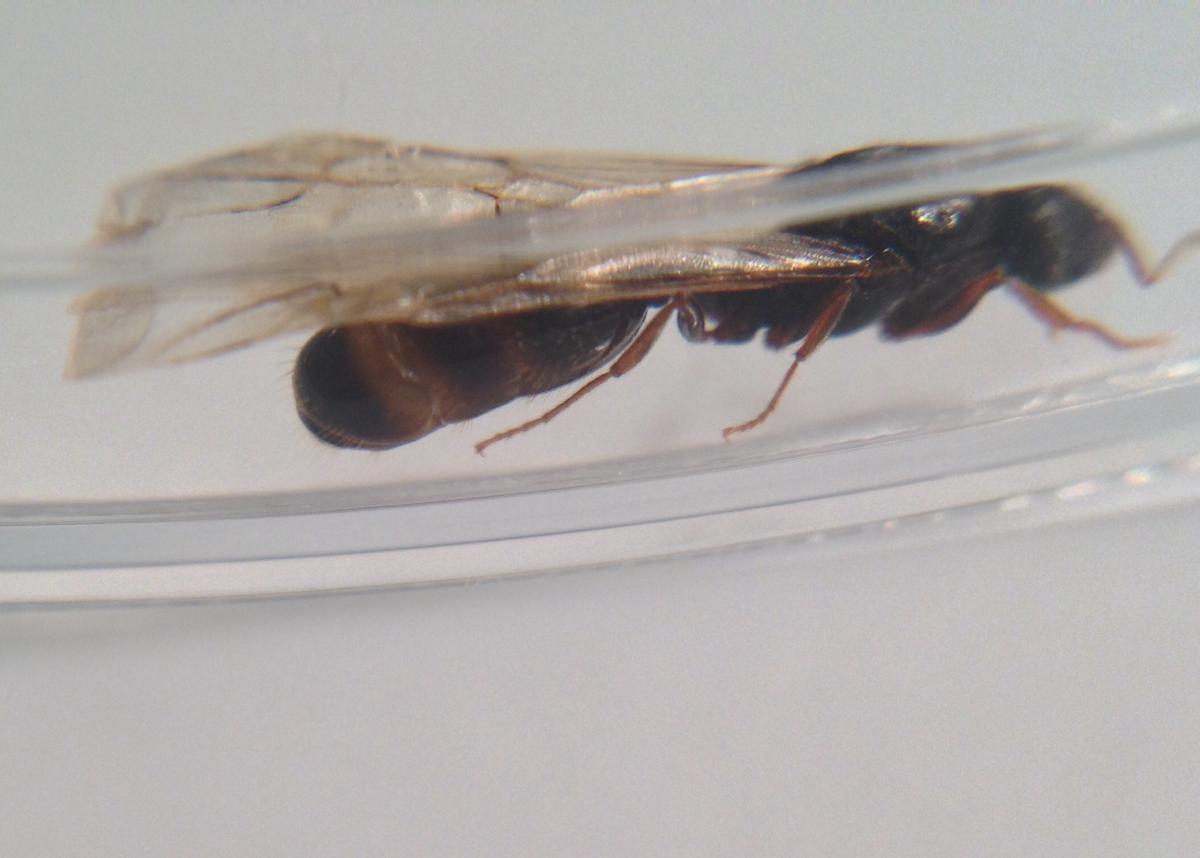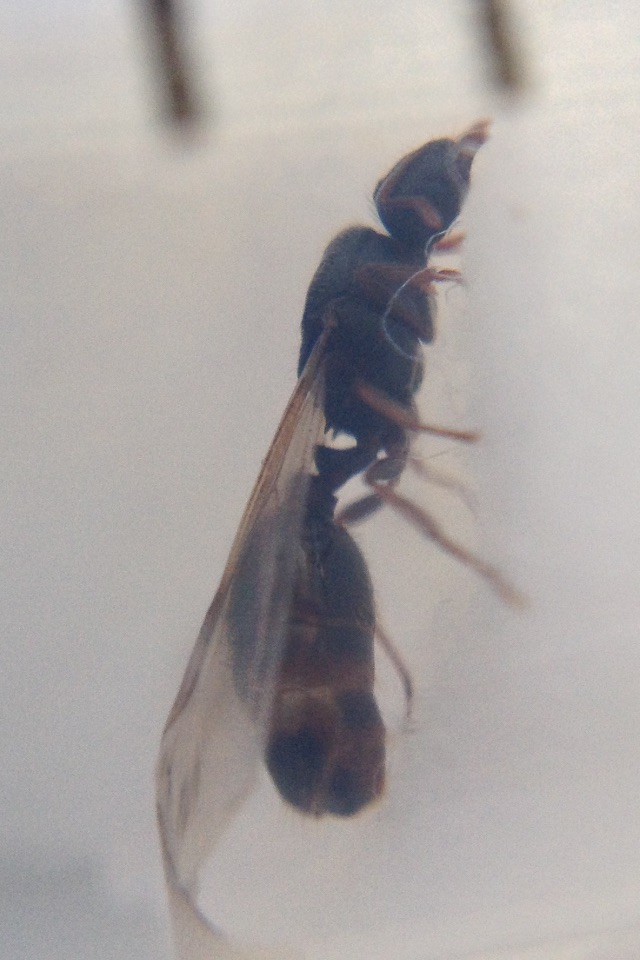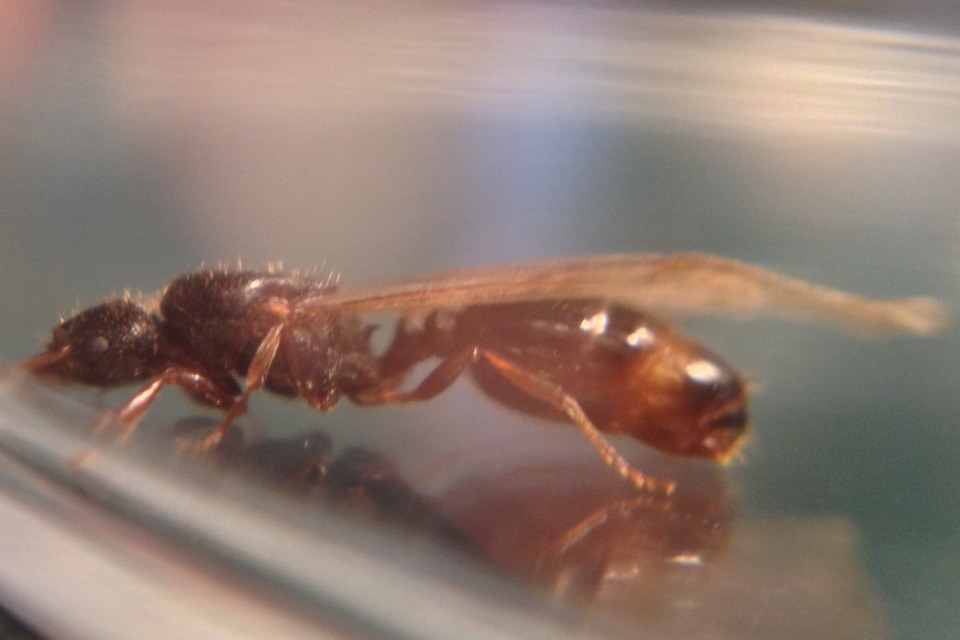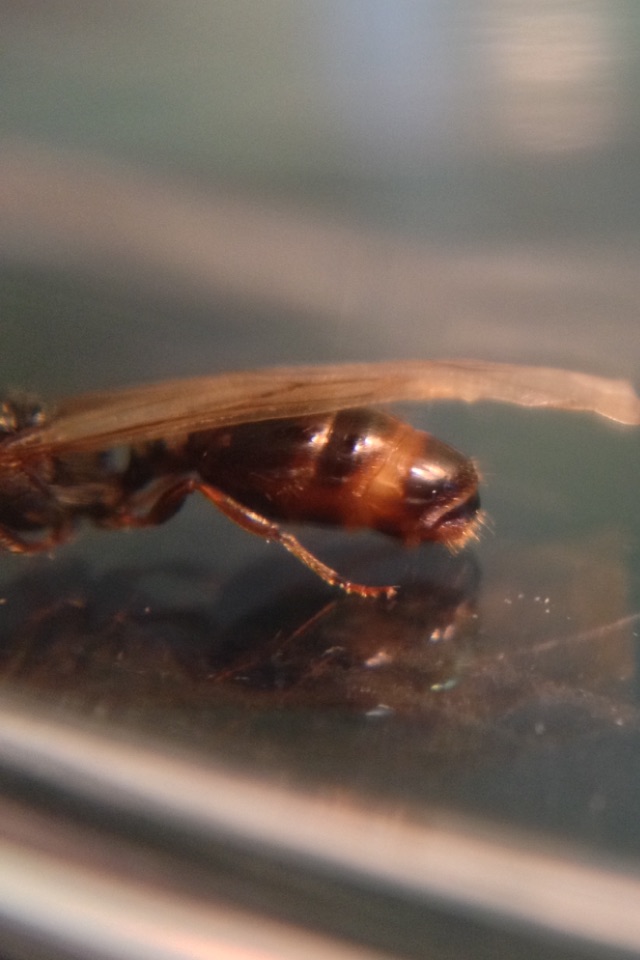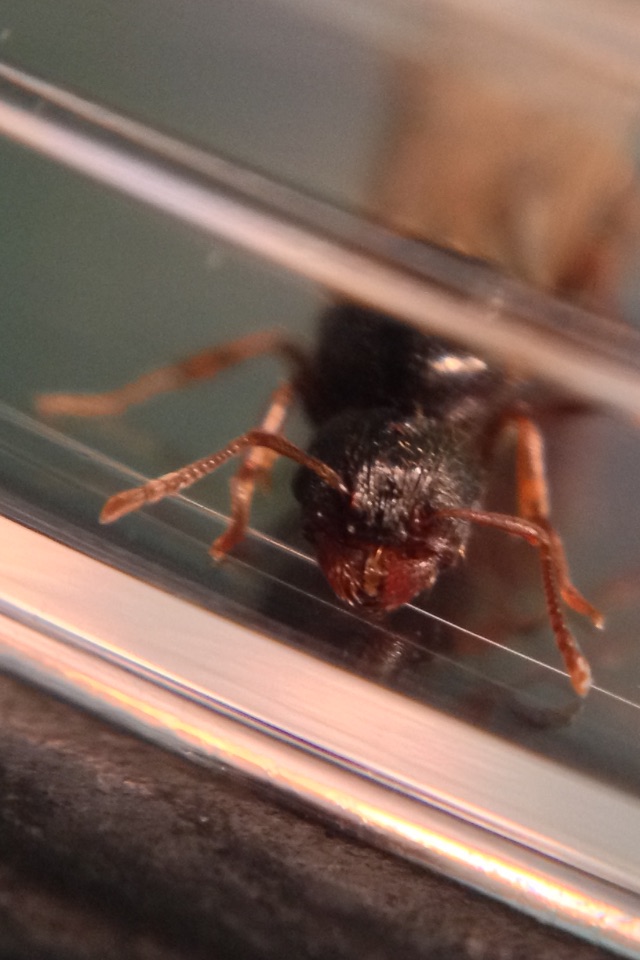Date of collection: June 14, 2015
Habitat of collection: Concrete..found her at 530am emerging from crack outside of my garage.
Length (from head to gaster): ~9mm
Color, hue, pattern and texture: Bicolored. Hairy. Dark brown body, lighter legs. Golden stripes on gaster.
Distinguishing characteristics: Her gaster. It has become elongated with shiny golden stripes, each day more pronounced.
Anything else distinctive: Very still and does not move much. Same goes for the other three ladies I picked up.
took a video too:
Edited by myrmecophile, June 27 2015 - 11:48 PM.






